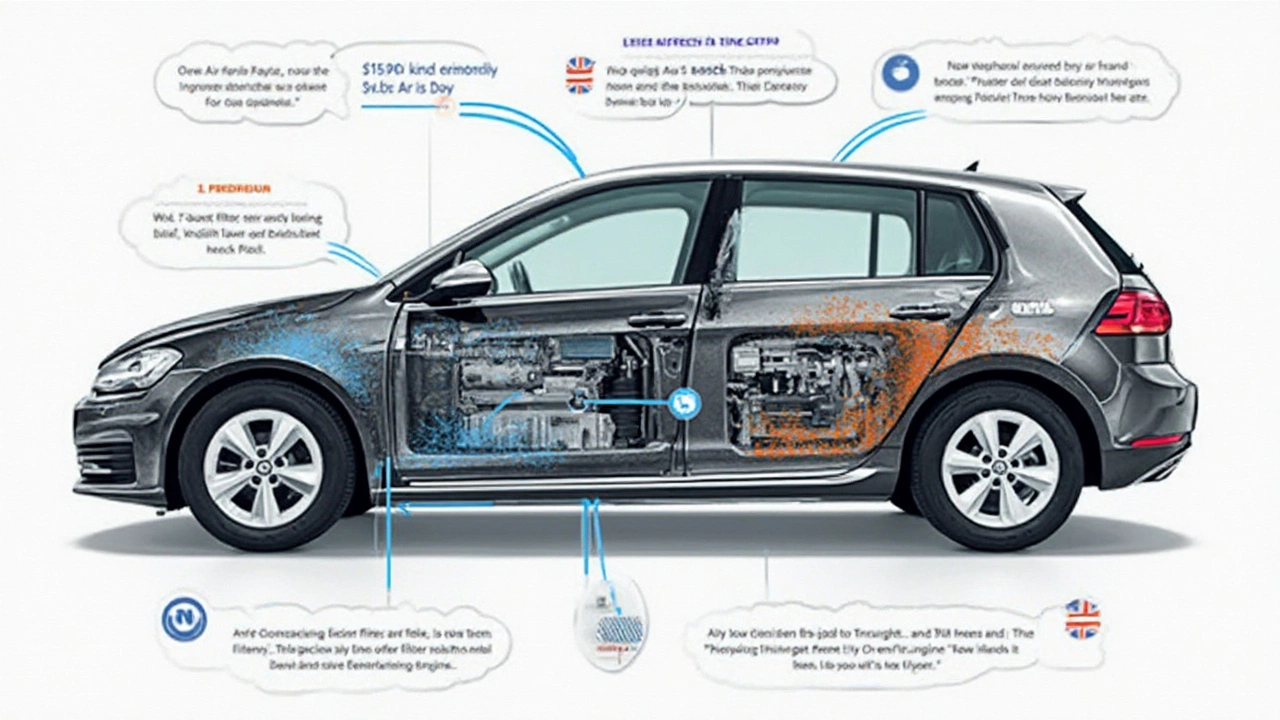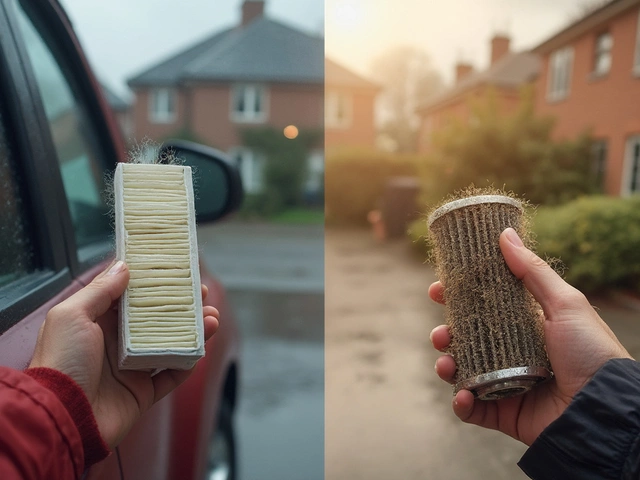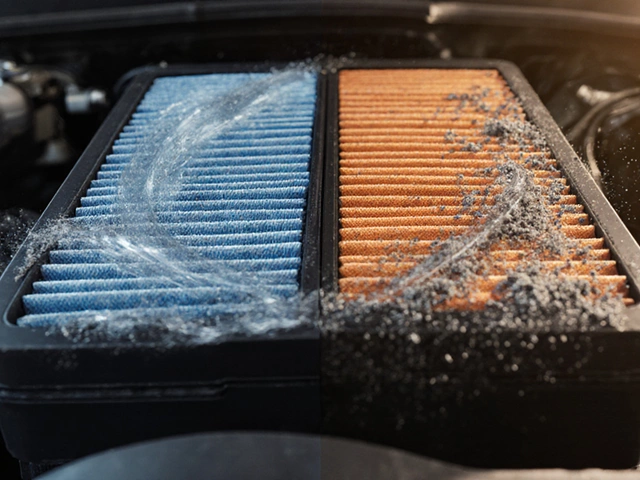Ever stood in an auto parts store, staring at a wall of car air filters, wondering why some are ten bucks while others push fifty or more? It’s not just branding—there’s real stuff going on under the hood, literally and figuratively. Whether you’re rolling in a basic sedan or a souped-up sports car, your air filter isn’t a ‘set it and forget it’ part. It matters for engine health, fuel efficiency, and even the air quality inside your ride.
The difference between a bargain-bin filter and a premium one comes down to more than price tags. Think materials, build, how well they actually keep dirt out of your engine, and how long they’ll last before your next oil change. Buy cheap, and you might be back swapping it out quicker than you’d expect—maybe even doing more harm than good to your engine over time.
Don’t worry, you don’t need to be a mechanic to get this. I’ll walk you through the real-world stuff car owners actually notice—what to look for, when spending more makes sense, and how to spot solid value versus marketing fluff. This isn’t just about keeping your engine happy (though Max, my dog, can attest to how much smoother my car runs after a quick filter swap), but your peace of mind too.
- Materials and Build Quality
- Filtering Efficiency and Flow
- Lifespan and Maintenance
- Impact on Engine Performance
- Cost-Effectiveness and Real-World Tips
Materials and Build Quality
Walk into any parts shop, and you’ll spot a huge variety of car air filters. And here’s the deal—what they’re made of and how they’re put together makes a big difference in how well they work and how long they last.
Cheap air filters usually use basic paper or low-quality cellulose. They’re light, easy on your wallet, but don’t stand up well to moisture or long-term use. Their plastic end caps and cardboard frames can warp or even fall apart if your engine bay heats up. If you check any car forum, folks often complain that these budget filters collapse or tear during routine checks.
Expensive filters, on the other hand, use thicker, premium cotton (often oiled), synthetic fibers, or high-tech foam. These materials snag more dirt while letting more air get through, which is the whole point. The frame is usually rubber or strong plastic that won’t crumble in the heat. Some even use metal mesh for extra support. You’ll also notice a better seal, so dust doesn’t sneak around the edges.
"A well-made performance air filter can catch up to 98% of particles while still boosting airflow, thanks to finer cotton or synthetic materials," says Tim Nelson, lead tech at Motor Authority.
Here’s a breakdown of the common materials you’ll find:
- Paper (cellulose): Cheap, but not durable. Okay for short-term use.
- Synthetic fibers: Common in better stock and mid-range filters. Decent at trapping dirt and letting air flow.
- Oiled cotton: Classic for reusable, high-performance filters. Grabs more debris; lasts for years if cleaned regularly.
- Foam: High-performance and off-road filters sometimes use thick, layered foam for max dirt control.
For a quick comparison, here’s what you might find inside a cheap vs. expensive filter:
| Type | Material | Frame | Reusable? |
|---|---|---|---|
| Cheap Filter | Paper | Cardboard/Thin Plastic | No |
| Expensive Filter | Oiled Cotton/Synthetic | Rubber/Metal Mesh | Yes (often) |
One more pro tip: Pick up a filter and flex it gently. A better-built filter will feel sturdy and the pleats won’t collapse. If the frame creaks or cracks, skip it. Don’t just trust the brand—trust your hands and eyes.
Filtering Efficiency and Flow
This is where cheap and expensive air filters really show what they’re made of—literally. Filtering efficiency means how well the filter grabs dust, dirt, and other junk before they sneak into your engine. Flow is about how easily air gets through the filter. You want both: a filter that catches the bad stuff, but doesn’t choke your engine while doing it.
Cheap filters usually rely on basic paper or low-grade synthetic fibers. These might catch bigger particles, but a lot of smaller debris can sneak past—think stuff like pollen, grit, or tiny bits of brake dust. Not great, especially if you’re driving in dusty places or city traffic. Premium or performance air filters use higher-quality materials, like multi-layer cotton gauze or dense foams, which can trap way more stuff without blocking airflow.
Here’s a head-to-head look at typical numbers: a low-cost standard filter grabs around 80-85% of particles above 10 microns; high-end ones, including performance air filter styles, can reach 98-99%. For context, human hair is about 70 microns, while the mean dust particle is between 2-8 microns. So we’re talking protection you can’t even see.
| Type | Efficiency (for 10 micron particles) | Air Flow |
|---|---|---|
| Cheap/Paper Filter | 80-85% | Low-Medium |
| Mid-Range OEM | 90-95% | Medium |
| Expensive/Performance | 98-99% | High (with proper fit) |
One thing a lot of car owners don’t realize: airflow is a big deal for your engine. If a filter is too restrictive, your engine gets less fresh air, which can tank performance and even mess with fuel economy. Drop-in performance filters are designed to give you good filtration and still let your engine breathe easily, almost like you’re running without a filter (without the downside, obviously).
If you mostly drive on clean highways, a basic filter could do the trick. But if you deal with dusty backroads, city smog, or anything harsher, a higher-efficiency filter can give your engine years of extra life. It’s a case of picking what fits your real world, not just grabbing the cheapest thing off the shelf.

Lifespan and Maintenance
Here’s where the rubber meets the road: not all air filters stick around the same amount of time. Basic cheap filters are usually made of paper or thin synthetic stuff. They work, but only until they start getting clogged up—usually somewhere between 12,000 and 15,000 miles. You might even need to change them sooner if you drive on dusty roads or hit a lot of traffic. Compare that with higher-end filters (think cotton gauze or foam). Some of these last up to 50,000 miles before they even need a look, and a handful claim to go even longer if you clean ’em right.
Let's break it down with a table for clear comparison:
| Type | Average Lifespan | Maintenance Needed |
|---|---|---|
| Cheap/Paper Filter | 12,000-15,000 miles | Replace every service |
| Premium/Synthetic Filter | 25,000-30,000 miles | Replace or clean every 1-2 years |
| High-Performance/Re-usable (e.g., cotton gauze) | Up to 50,000+ miles | Wash and reuse (every 1-2 years) |
Now, about maintenance—cheap filters are basically toss-and-replace: yank the old one out, slap in a new one, done. Expensive or high-performance air filters shake things up. Many are reusable, meaning you pull them out, wash them with water or special cleaner, let them dry, and then put them back in. Some even need special oil sprayed on after. It’s more hands-on, but you end up buying fewer filters, which saves you cash in the long run.
Here’s a quick rundown for maintaining a reusable filter:
- Check the filter at every oil change.
- If it's looking dirty or blackened, pull it out to clean.
- Wash with a recommended cleaner—don't use harsh soap or blast it with high-pressure air.
- Let it air dry completely. Don't use heat.
- For oiled filters, reapply filter oil evenly before reinstalling.
One last tip: Always check your car manual for recommendations. Some newer cars actually have sensors that detect airflow, and a clogged filter (even the pricey kind) will make your engine struggle. The bottom line—maintenance habits should match your filter of choice and driving style. The car air filter you choose isn’t just about the upfront price, but how often you need to mess with it down the road.
Impact on Engine Performance
The air filter doesn’t just keep out dirt—it decides how easily your engine breathes. When you put in a cheap filter, you’re usually getting basic paper material and a design that restricts airflow. Less air means your car’s engine has to work harder for the same output. That can mean rough starts, sluggish throttle response, and a noticeable dip in power, especially if you’re trying to accelerate or drive uphill.
High-end filters use better materials, like multi-layer cotton or synthetic blends, that don’t clog as quickly and let more air through without letting in dust. This is why enthusiasts and anybody with a turbo or performance car almost always choose them. More air—when paired with the right fuel—means smoother acceleration, a little more horsepower, and improved engine sound. You might not notice a monster jump in power, but most users see better throttle response and even 1-3% better fuel efficiency. That adds up on your yearly gas bill.
Here’s some useful data from a real-world lab test comparing a cheap versus an expensive air filter:
| Test Filter | Airflow (CFM) | HP Increase | Filtration Efficiency |
|---|---|---|---|
| Basic Paper (Cheap) | 210 | 0 HP | 97% |
| Premium Performance (Expensive) | 250 | +4 HP | 99% |
The numbers aren’t life-changing, but if you daily drive or like a peppy feel under your foot, it’s worth it—especially since a car air filter swap is quick and doesn’t need a mechanic. Remember, a clogged filter chokes the engine over time, leading to higher gas use and possible long-term wear. If your check engine light comes on or you smell fuel too often, it could just be a blocked filter holding you back.
- If you live in a dustier area or drive off-road, investing in a premium filter pays for itself in saved repairs.
- Check your air filter during every oil change—it’s often overlooked, but your engine performance depends on it.
- Don’t expect a race car just from a filter upgrade, but do expect your engine to feel less strained and sound a bit sportier.

Cost-Effectiveness and Real-World Tips
Let’s look at the bottom line: does dropping extra cash on a pricier air filter really save you money? Upfront, a cheap filter might cost around $10–$15, while a high-end performance one could hit $40–$80. But that’s just the first chapter. Here’s what happens after you swipe the card.
- car air filter lifespan matters more than sticker price. A typical paper filter lasts about 12,000–15,000 miles, while premium filters (like K&N or aFe) can go up to 50,000 miles before cleaning. Some are even washable and reusable, slashing the number of times you’ll need to buy replacement filters.
- Engine efficiency isn’t marketing hype—dirty filters kill MPG. Studies from the US Department of Energy show that clean filters can up your fuel economy by up to 10%. That adds up at the pump.
- Premium filters can actually protect your engine better in dusty or tough driving conditions, keeping particles out and oil cleaner. That’s less risk of big-ticket repairs down the road.
Here’s a simple cost breakdown for a three-year stretch if you drive 15,000 miles per year:
| Filter Type | Initial Cost | Replacements Needed (3 Years) | Total Cost (3 Years) |
|---|---|---|---|
| Cheap Paper | $12 | 3 | $36 |
| Premium Reusable | $50 | 1 (just clean it) | $50 |
Even though you pay more up front for a quality filter, you could break even in a couple years—and that doesn’t count what you could save on better MPG or engine repairs.
- If you mostly do short trips or city driving, changing even a basic filter on schedule is more important than filter brand.
- If you’re in dusty areas or regularly drive long highway miles, going premium can seriously pay off. The better protection means less engine buildup and longer oil life.
- Don’t ignore reusable filters—they need regular cleaning. If you’re not keen on getting your hands dirty, stick with disposable. But if you like DIY auto care, washable filters are a smart buy.
Switching filters is honestly a super easy DIY job, usually needing just a screwdriver. Manufacturers put instructions in your owner’s manual, and there are plenty of step-by-step YouTube guides if you get stuck.
Bottom line: Match your driving style with the right filter. Sometimes cheap is fine, but there are real financial and engine-health reasons to level up to a better air filter if you care about long-term value.




